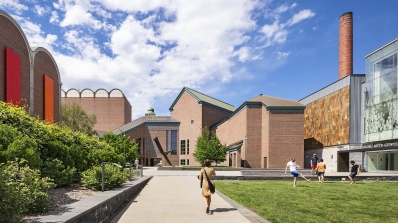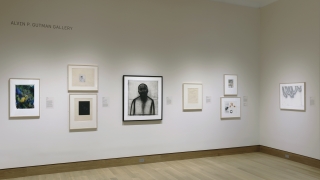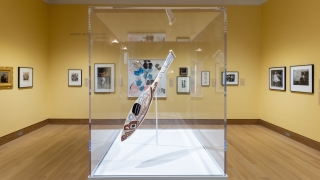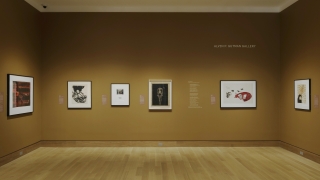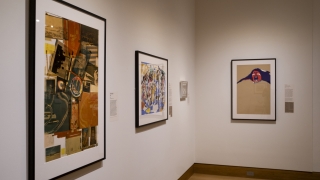Exhibitions Archive
Humor and the Human Body
The Butt of the Joke"The Butt of the Joke: Humor and the Human Body" aims to explore the reasons why we find certain depictions of the human body funny. Lighthearted and fun, it seeks to prompt both laughter and thoughtful contemplation regarding the ways in which we think about our bodies.
Experiencing trauma can change our biochemistry and behavior, producing a disease called PTSD. Contemporary neuroscience research suggests that through the making of art, individuals can recalibrate their biochemistry and cure their symptoms. "The Soul has Bandaged Moments" encourages three conversations: challenging the definition of trauma, exploring trauma as a physiological disease, and proposing different mechanisms of healing.
What happens when we assess a work of art as a historical document? When Art Intersects History examines works of American modern art that document the history of equality during the second half of the 20th century. This politically charged era reached a climax in the 1960s and 1970s with the confluence of the civil rights movement, women’s rights campaigns, the gay rights movement, and Vietnam War protests. All of this resistance was propelled by a mounting countercultural cry for equality and social justice. This exhibition considers how American artists have shared their perspectives on these galvanizing historic moments, and how their work still impacts us today.
What Do You See?
Vision 2020Mass media and technology inform not only our understanding of the contemporary world but also our self-perception. Vision 2020: What Do You See? highlights works from the Hood Museum’s collection that grapple with the impact of visual media and technology on body image in the 20th and 21st centuries. The artists in this exhibition encourage conversation about beauty ideals, gender, self-perception, and agency in mass media.
Black Bodies on the Cross attempts to capture the dissonance and duality present in the Black Christian experience, as seen through the eyes of postwar and contemporary African American artists including Romare Bearden, Ashley Bryan, Kara Walker, and Enrico Riley. By inserting Black subjects into Biblical narratives, these artists explore the ways in which the Black experience can be understood as part of a universalizing Christian narrative that, ironically, often excludes Black subjects.
